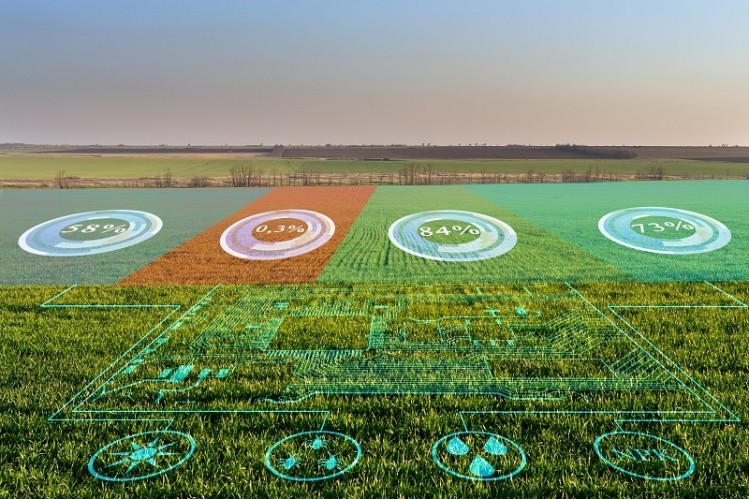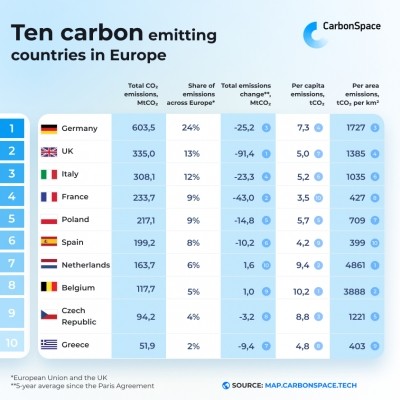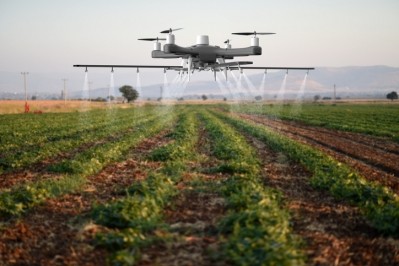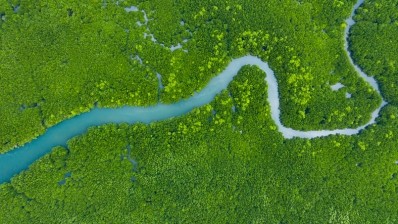Satellite data ‘key to accelerating carbon footprint transparency in food systems’

Agtech start-up CarbonSpace uses satellite data to measure the carbon footprint of food and forestry supply chains.
Validated by the European Space Agency, CarbonSpace’s data is based on satellite measurements and analysed using AI technology. This shows the carbon flux of land areas over time, and monitors both CO2 uptake and emissions from farms, fields, forests and other land-use.
It says data acquired from the platform brings a new level of transparency to supply chains and unleashes the potential of nature-based solutions, encouraging investment in protecting and restoring nature to meet emissions reduction goals.
For example, traditionally, emissions data reports solely on anthropogenic (pollution caused by human activity) emissions of a given area. CarbonSpace technology maps the total carbon balance, including both anthropogenic and biospheric fluxes. It can provide data for territories of countries, cities, and relatively large geographical regions to a 5-10km resolution, depending on the latitude.
“Our mission is to provide carbon footprint transparency in the food systems,” Dr. Oleg Demidov, CEO and co-founder of CarbonSpace told FoodNavigator. “This usually balances the relations of different parties. Farmers, who can prove the sustainability of their practices, can be rewarded with access to new customers, receiving premium prices or longer-term contracts. So, we think that the tools like CarbonSpace can empower primary producers in multiple ways: from providing insights into the carbon performance of their land operations to providing transparency downstream of their value chain.”
The Dublin-based start-up claims that by using CarbonSpace analysis Danish farmers were able to improve the carbon uptake of their farmland and reduce their overall carbon footprint by changing their crop. Here, the owner aimed to analyse the carbon footprint of the land to understand the correlation between carbon uptake and different agricultural practices, Demidov told us. CarbonSpace analysed the carbon sequestration of different crops, soils, and times of the year to build a picture of their capacity as carbon sinks. “As a result, the farm was able to adjust land use to maximise sequestration potential and has recorded a reduction in overall emissions.”
What about methane? “On the farm level, the tool tracks land-based CO2 fluxes on a monthly basis, with annual large-scale emissions estimations for CH4 already being introduced to the existing customers within the livestock industry,” Demidov said, adding “better spatial and temporal resolutions for methane are under development now.”
CarbonSpace’s technology can be exploited by big retailers and CPGs too, we were told. “Deforestation is indeed an important issue and satellite-based products to track it do exist,” said Demidov. “CarbonSpace has a different approach: instead of focusing on the tree cover (above the ground biomass), we're looking at the total ecosystem performance in terms of carbon exchange. Big retailers and CPGs are one type of customers and they use our data to estimate the land-based carbon footprint within the supply chain. It's not only reporting on the agenda but the assessment of sustainable agriculture programs. The CarbonSpace platform helps assess their performance at scale and guide further climate action by corporate players."
'Nature-based solutions' remain underinvested
Founded in 2020, this year CarbonSpace secured $1 million in seed funding from The Yield Lab and Rockstart following Kickstart accelerator funding from the European Space Agency.
“The global carbon footprint estimation is built on the so-called top-down approach,” continued Demidov. “It leverages the publicly available space assets such as data from Sentinel-5P, GOSAT, OCO-2 satellites, which measure greenhouse gases concentration in the atmosphere. Using the Atmospheric inversion algorithm, they calculate rough resolution carbon emission data with 1-degree granularity. Integrating MODIS (or other satellite) multispectral data in Zooming technique based on results of an inversion algorithm they obtain a medium resolution with 0.1-degree granularity (5-10 km, depending on the latitude).”
Demidov however agreed a big challenge facing this technology is the fact there's still not enough consensus on the tools and methods to prove the positive change in agriculture, forestry and land use sector.
Though these sectors possess great potential to contribute to climate change mitigation, he explained, it is currently under-invested because of the lack of transparency and verifiability of claims. “Satellite-based platforms, like CarbonSpace, can provide accurate and unified estimations globally, thus facilitating the capital flow in nature-based solutions,” he said.
Is cost and practicality a barrier?
Cost and ease of use, he added, should not hinder development. CarbonSpace is a subscription-based platform. The innovation provides up to a 10x cost decrease, compared to traditional monitoring methods, the CEO claimed.
“There are no additional costs associated with the use of the platform. It is fully remote, with no on-site operations and automated. The only requirement to start a project is to have coordinates of the land areas and their land-use types.”
Progress on climate targets needs to speed up
As a snapshot of what CarbonSpace technology can do to support climate action, the start-up released data from across the EU and UK revealing that since the Paris Agreement was signed in 2015, total carbon emissions for the region have reduced by 9% (8.88%) which would not be enough to meet the UN Intergovernmental Panel on Climate Change’s demands that global emissions must be halved by 2030 in order to limit temperature increases to 1.5 degrees.
CarbonSpace compared the carbon footprints of European countries in the five years leading up to the Paris Agreement being signed, with the five years that followed to observe whether commitments to climate action resulted in a net footprint reduction. Overall, the results show that carbon footprints across the region have decreased.
According to the CarbonSpace assessment, the countries with the largest carbon footprints from across the European geographical region in 2020 were Germany, the UK, Italy, France and Poland. These countries account for two thirds of the region’s total carbon footprint; with ten countries responsible for 92% of its footprint.
Mark Griffiths, Managing Director, ClimateCare, said: “The results demonstrate that we are miles off-track. Science tells us that we need to halve emissions by 2030 to get on a 1.5°C trajectory and avoid disastrous climate impacts, and we have only managed a little over 8% in the 5 years post the Paris Agreement. We need to deploy every tool in the toolkit, leveraging both natural and technological solutions, with a high level of accountability and transparency from governments and corporations, so we can keep this planet habitable for all. This is where CarbonSpace can play a meaningful role in our economic transition to meet the Paris Agreement goals.”


























